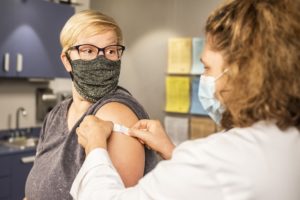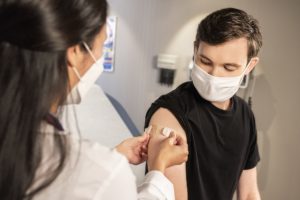Perhaps it’s because I often drive on two-lane country roads, or perhaps it’s because I’m not a patient driver, but one of my pet peeves on the road is someone who is driving slowly because –surprise– they’re using their cell phone. Why do they do it? Because they’re kidding themselves that it’s not dangerous.
Regular readers know I’m an advocate for employers having a “no cellphone use while driving” policy for their employees. The policy shouldn’t just apply when driving a company vehicle, but also when driving a personal vehicle for company use (like picking up a birthday cake for the monthly social, or last-minute supplies for a staff meeting).
I know employers are reluctant to impose this policy because it seems intrusive. But absent a policy (or law), it’s very difficult for most of us to change our behavior. We all kid ourselves that it’s not so dangerous to talk and drive . So, today I want to bust 4 myths (or excuses) we tell ourselves. Directly from the National Safety Council to you:
Myth 1- Drivers can multitask.
Reality: The human brain cannot multitask. You’re instead switching between talking and driving, two tasks which both require thinking. That’s why it’s hard to follow a TV show if you’re on the phone.
Myth 2- Talking on the phone is no worse than talking to a passenger.
Reality: Drivers on the phone are “more oblivious to changing traffic conditions because they’re the only ones in the conversation who are aware of the road.” By contrast, talking to a passenger in your car provides an extra set of eyes. Passengers also adjust their talking if traffic gets tricky. People on the other end of a driver’s cell phone can’t.
Myth 3- Hands-free devices eliminate danger.
Reality: Freeing up your hands, doesn’t free up your brain. The brain area used to process movement of images is reduced by 37% when listening to language.
Myth 4- It’s not worse than driving drunk.
Reality: Actually, it is. A University of Utah study found that drivers using a cell phone had slower reaction times than drivers with a .08 blood alcohol.
Ready to write that policy? Great resource here www.cellphonekit.nsc.org
© Copyright Eva Del Rio


